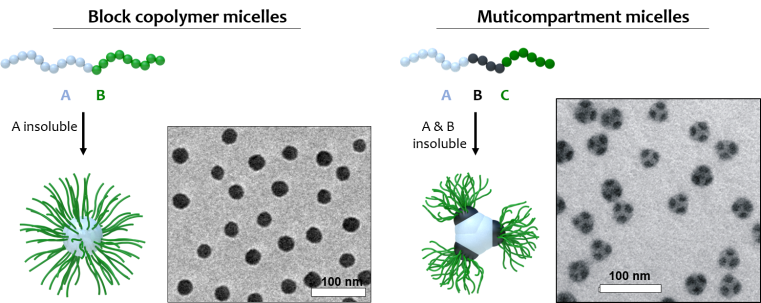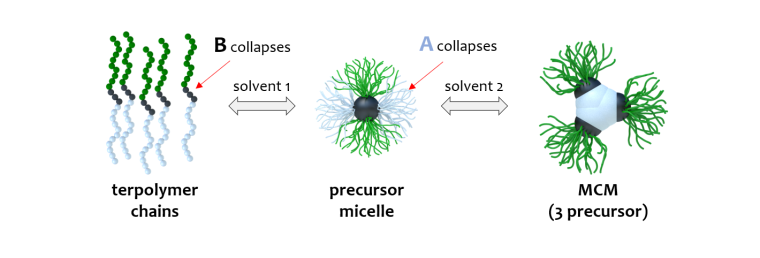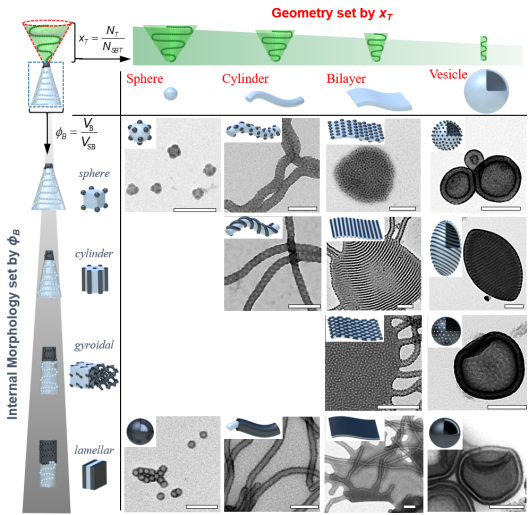Multicompartment Micelles

Multicompartment micelles are block copolymers micelles with a compartmentalized core, i.e. the core is not homogeneous but divided into nanocompartments with different chemical environments. Compartmentalization is an essential requirement for life (e.g. cells and organelles), and synthetic mimics promise the separate storage of incompatible materials with nanometre distance (e.g. catalysts). Polymer blocks are intrinsically incompatible and therefore ideal candidates to form MCMs. To create MCMs, three domains are needed: 1) one soluble block that forms a stabilizing corona (green in schematics but not visible in TEM); 2) two insoluble blocks that form the core compartments. Naturally, ABC triblock terpolymers (linear or µ-arm stars) consisting of three covalently linked polymer blocks are the best choice for this job.


